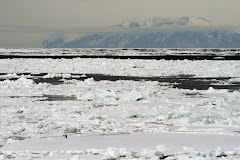
Hello! Sorry that it has been so long since my last posting. This summer has been very busy with weekly ctenophore sampling and two week-long mesocosm experiments conducted in Great South Bay. This season has been an interesting one for ctenophores. In 2006, we documented an increase in ctenophore (Mnemiopsis leidyi) abundance by a factor of two to three in Great South Bay and Peconic Bay since the previous investigations conducted two decades ago. We also found that ctenophores appeared two to three months earlier than previously documented. This year, we did not see the very large ctenophore abundance that we found in 2006 (although still significantly higher) and the peak population bloom occurred approximately one to two months earlier. 2008, however, was met with a large brown tide event throughout Great South Bay in late spring/early summer which undoubtedly altered the dynamics and structure of the planktonic community. What we did see of interest this year, however, was how effectively the ctenophores cleared the water of their zooplankton prey. For weeks following their population peak, zooplankton numbers plummetted and ctenophore egg production dropped as a result of their ability literally to eat themselves 'out of house and home'. Ctenophore populations subsequently dropped and zooplankton appear to be back on the rise. This has been associated with a return of egg production in the remaining ctenophores collected. Too bad for Mnemiopsis, however, that their ctenophore predator Beroe ovata (pictured) arrived a few weeks ago and have been increasing in abundance coincident with decreasing Mnemiopsis abundance. We still have a few more weeks of sampling to go, but it will be interesting to see if Mnemiopsis populations will be able to recover, or will be restricted by predation by Beroe. Continued research includes further gut content analyses, feeding experiments, egg production and elemental composition analyses of Mnemiopsis. Phew!


.jpg)




